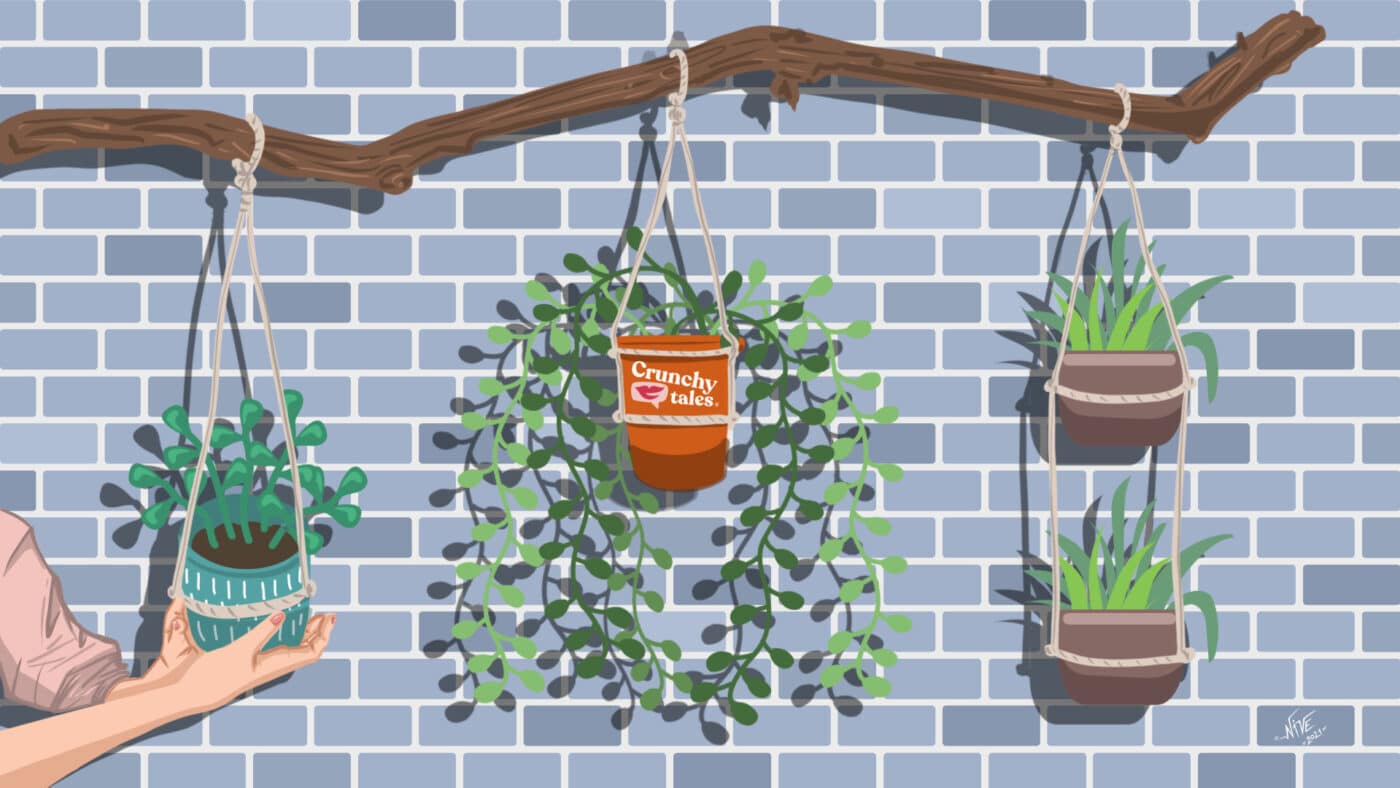The Best Ways To Create An Indoor Hanging Garden
Dreaming of a small indoor garden? Think vertically! Using a selection of ingenious hanging pots with trailing plants, you can easily create a green haven even if you live in a tiny home.
Hanging planters come in many different styles and materials: from small pots and ampoules to luxurious baskets that leave viewers breathless. In most cases, the hanger has a nice hook on top to keep it attached or is fixed to your walls/fences with thin rails.
Macramé plant hangers are often a good choice for many homes and can be the perfect way to draw attention to your green area. The great thing about this type of sky planter is that you can get different looks depending on the pot you choose to insert into the planter itself. For instance, a simple terracotta plant pot will give a casual or bohemian look to your macramé hanger. On the other hand, a sleek and simple metal plant pot will give it a more modern feel making it suitable for more contemporary settings.
Whatever pots and hangers you choose, it’s important to think of the place where you are going to hang it before adding your ferns and succulents. The best areas are usually those with beams or rooms where you can add supports, like nails in the wall or other hanging systems.
You can purchase ceiling hook kits from your local hardware store that correspond to the weight of your planter – says Molly Williams from Apartment Therapy -. If you’re putting the hook into a wooden beam or wooden ceiling (like a porch or cabin), a regular J-hook will suffice. Otherwise, it’s important to secure the hook with an anchor so it doesn’t pull out of your ceiling.
Which plants are the most popular for hangers?
Indoor hanging plants range from varieties with leggy, trailing vines to those with thick and rubbery foliage. Here are the best options for beginners, according to RHS, The Royal Horticultural Society.
- Devil’s Ivy
This plant gets its name from the fact that it’s practically impossible to kill. A lovely evergreen vine, it stays green even when kept in the dark. It requires very little care and is satisfyingly leafy. Perfect for newbies, let it dry out between waterings. - Boston Fern
Very tolerant of drought. The fronds are bushy and slightly serrated and are a vibrant bright green. Make sure it gets enough humidity. If you don’t have a humidifier, try spraying it with water. - Heartleaf Philodendron
This beautiful plant is an evergreen climber. As the common name suggests, Heartleaf Philodendron has heart-shaped leaves and they are a deep glossy green. Extremely hardy, it will tolerate drought even if the soil becomes bone dry. - Spider Plant
It has long strappy leaves and arching stems with tiny plantlets on the ends, which can be pinched off to make new baby plants. Stick it in a room with bright light, even though it’ll adjust to low-light conditions. Water it when the soil is slightly dry. - English Ivy
English Ivy looks beautiful cascading down the sides of a hanging basket or pot. It prefers moderate light but will adapt to low-light conditions.
Get creative with Kokedama and Strings
And in case you want to challenge yourself, how about creating your own string garden?
String gardens are a contemporary version of the traditional Japanese kokedama, a ball of moss-covered soil on which an ornamental plant grows – write Alana Langan and Jacqui Vidal in the book ‘Plant Style: How to Greenify Your Space‘-. The main difference is that they have an additional layer of poly felt that protects and insulates the ball, and keeps it much neater (kokedama often shed their moss as they grow).
No green thumbs are required and if you’re feeling crafty, there are several tutorials out there for creating a string garden yourself but nurseries also sell entirely premade string gardens online. A long-lasting ivy or fern seems to be the most popular choice for the plant growing out of the moss ball.
Caring for them is easy. “Simply submerge the ball in water for ten minutes every ten days – Alana and Jacqui explain -, leave it to drip outside in the shade for a short time, and then bring it back in. Plant care doesn’t get much simpler.”
Last but not least…
Before planting your green in a new hanging pot, make sure of how much water and sun it needs to thrive. A south-facing window is best for plants that need bright light, but many of the plants on this list can survive in low-light conditions. And whatever you do, make sure your planter has draining holes to prevent overwatering.
If you can’t rely on yourself remembering to take good care, try liquid fertilizer, and pour some in once per week.





